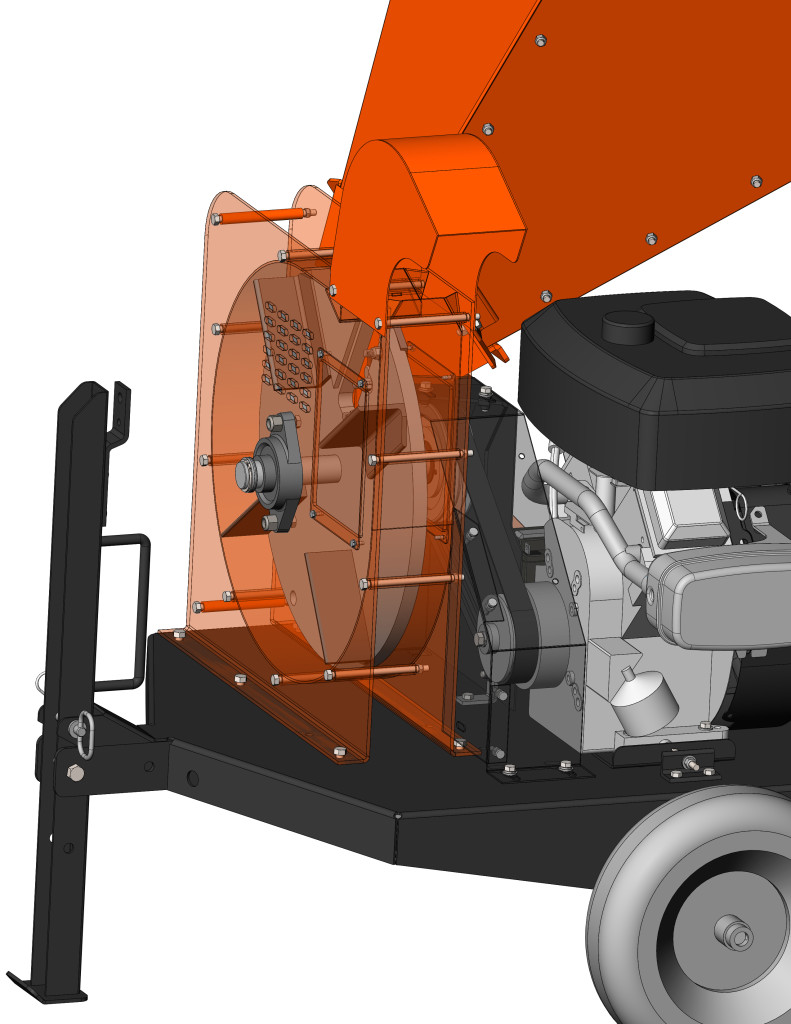How Does a Wood Chipper Work?
Ever think about what actually happens inside your machines? It’s not magic that gets your wood chipped, your lawn mowed, and your stumps ground away . . . it’s a whole bunch of fairly simple mechanisms all working together to get the job done with as little work for you as possible. You may have asked yourself, “how does a wood chipper work, anyway?” The answer can help you to choose the chipper that’s best for you, as well as troubleshoot problems that may arise if you already own one.
Here’s How It Works:
- The engine provides the power by making the crankshaft turn. (I won’t get into how the engine works, that’s another topic for another day!)
- The crankshaft is attached to the clutch, which can make the drive belt move, or keep it still. When the engine is at or above 1,600 rpm, the clutch engages the drive belt, making it turn.
- The drive belt turns the impeller, which has a chipper knife built into it.
- As wood enters the hopper, it hits the spinning impeller and chipper knife, which shreds it into tiny woodchips.
- Fins on the back of the impeller, along with airflow from the vents, push the woodchips out the discharge chute.
You’ve got the power!
All wood chippers rely on some type of power source. Usually they get their power from a gas engine, although you may come across an electric model now and again. DR Chippers start with Briggs and Stratton OHV (overhead valve) engines, which means that they are relatively compact for how powerful they are. Our biggest chipper has 30 ft./lbs. of torque, which equates to about 18 horsepower. This is more than enough for most homeowners, but you’ll find commercial units that have 200 horsepower or more. Those are beastly machines, though — not something you’d want to store in your barn! Even the smaller 11.5 or 16.5 ft./lbs. models are significantly more powerful than cheap ‘big box store’ machines and will last a lot longer.
To reduce strain to the engine (making it last longer) the clutch will not engage the drive belt until it reaches 1,600 rpm. If you find a piece of wood that’s tough enough to slow the impeller down so much that the engine goes below 1,600 rpm, the clutch will disengage the drive belt, stopping the blade from turning and saving your engine from the strain. That’s why it’s best to know what size branches you are going to want to chip before you choose an engine size. If you choose a model that’s designed for branches up to 3-1/2″ and you try to put a 5″ thick branch in there, that clutch is going to protect your engine from the added strain by disengaging the drive belt. Bottom line: don’t try to put in bigger branches than your machine is designed for! The DR literally won’t let you kill your engine by overloading it with too-big branches.
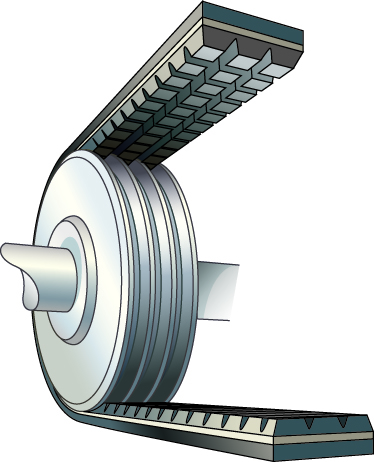 Kevlar, cogs, and cold, hard steel
Kevlar, cogs, and cold, hard steel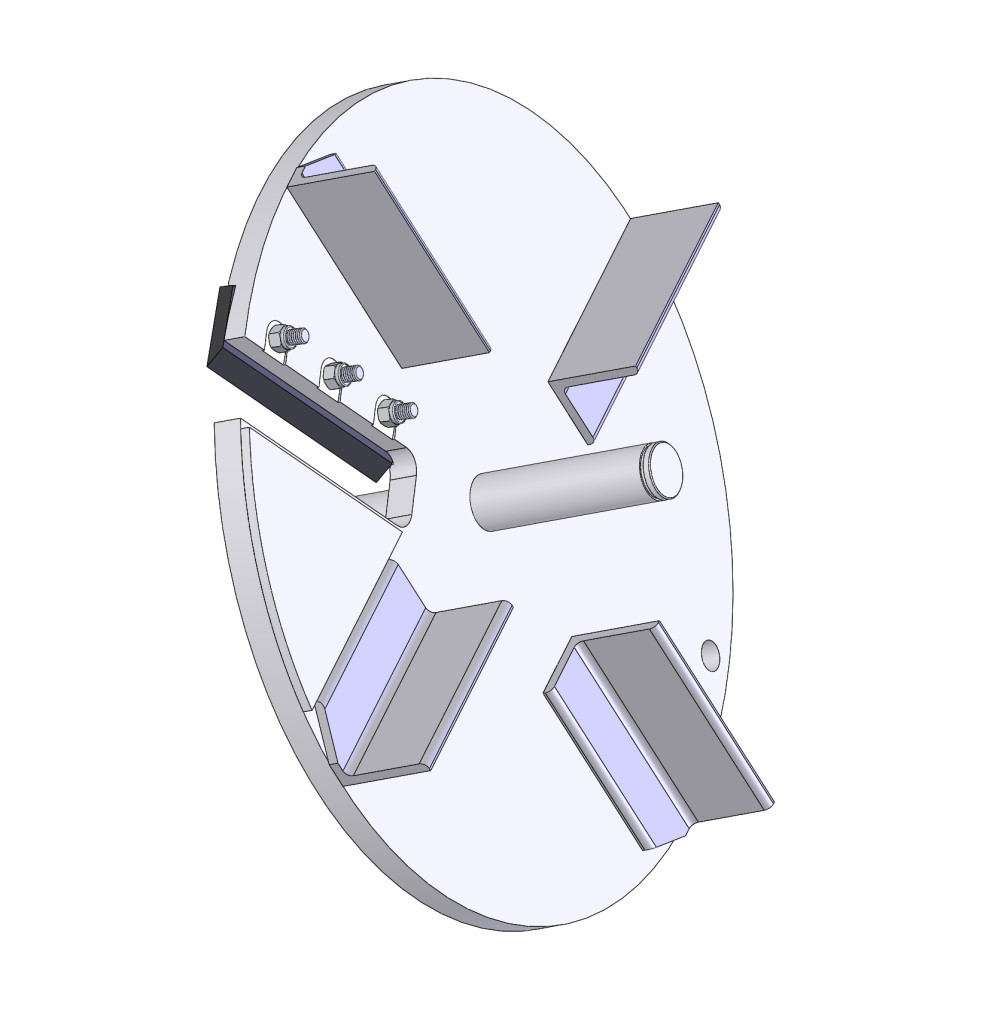
In the smaller models (and small is a relative term, because there’s nothing small about the the power these models pack!), the drive belt is reinforced with Kevlar, making it super tough and durable. The largest models (16.5 PRO, 30.0 PRO-XL, and PTO) have a super-duty cogged drive belt. This not only grips the clutch and impeller even better, but keeps the belt cool, making it last longer. Because when a belt moving at 3,800 ft/second gets pretty darned hot, and the heat is what makes belts break down and need replacing.
The heart and soul of the chipper is the impeller and blade. DR’s impellers are made of thick steel — three times as thick as our competitors’ impellers. Built into the impeller is the chipper knife. Ours is designed to mimic the big commercial machines, with tool-grade steel, a rigorously sharpened edge, and a wider design than other chippers.
How does self-feeding work?
Three design features of the DR Rapid-Feed Chippers make them self-feed most branches. First, the hopper is vertical, so gravity forces branches down toward the impeller and chipper knife. Second, the chipper knife is precisely angled such that it “grabs” materials and draws them in. Lastly, air-injection venting helps create a vacuum in the chipping chamber, sucking in branches to be chipped and air that will blow the woodchips out the discharge chute.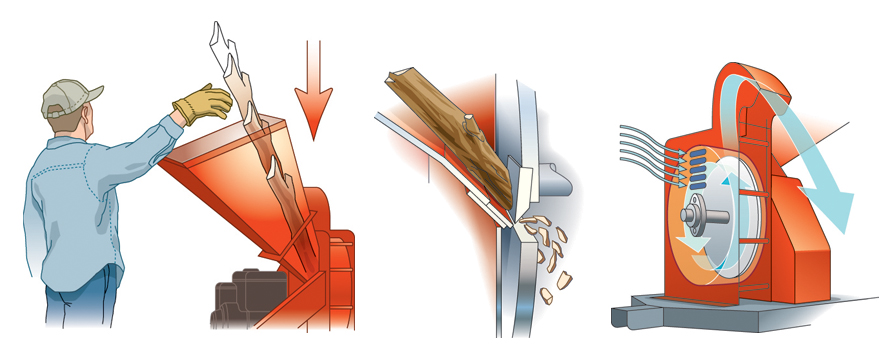
Want to learn more about DR Chippers and Chipper/Shredders?
Order your FREE Buyer's Guide & DVD!
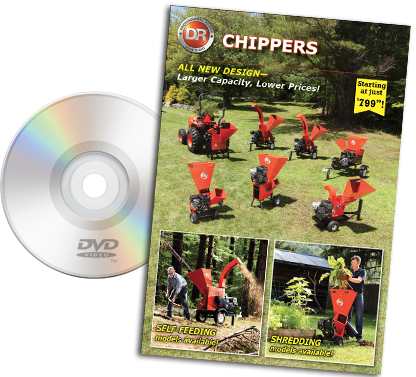
What's inside
- 24-Page Buyer's Guide
- Action-Packed DVD
- Money-Saving Promotions
